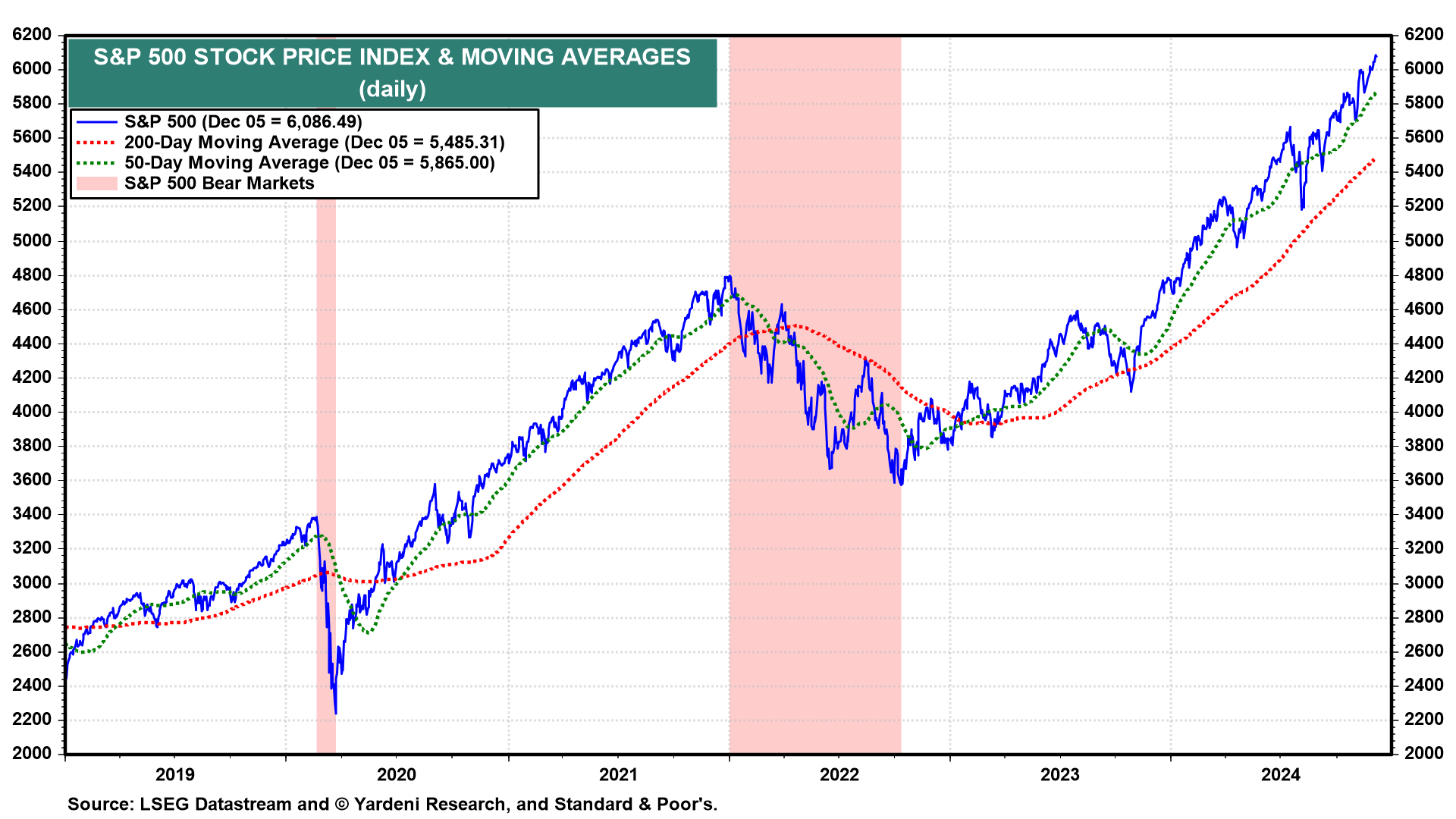We were very bullish at the start of this year with a Street-high year-end price target of 5400 for the S&P 500. That level was surpassed on June 12. We weren't bullish enough as the stampeding bulls left hoof marks on our backs. So we raised our target to 5800 on July 10, which was surpassed on November 6 (chart). So we raised our target to 6,100 last month thanks to Trump 2.0 and the Fed's dovishness. We remain bullish on the outlook for the US economy and stock market through the end of this year and decade. We think the Roaring 2020s could turn into the Roaring 2030s.

However, for the here and now, there may be too many charged up bulls. Of course, the most charged up ones are in the Bitcoin market (chart).

Contrarian indicators are turning bearish suggesting the new year might start with a stock market pullback. If so, that will probably be attributable to rebalancing portfolios at the start of the new year rather than the end of the old year to postpone taxes on substantial capital gains. So it shouldn't last very long and would be a buying opportunity. Here's what we're seeing:
(1) Bull/bear ratio. The Investors Intelligence Bull/Bear Ratio has surged from 2.3 in mid-October to 3.9 last week. The percentage of bulls is up to 62.9%, around historical highs.

(2) Moving averages. The S&P 500 is now 11.2% above its 200-day moving average, signaling the market may be overbought (chart). Financials are especially overextended.

(3) Consumer expectations. The Conference Board's November Consumer Confidence Index (CCI) survey showed a record 56.4% of consumers expect stocks to be higher in the next 12 months (chart). That's even more bullish than ahead of the Tech wreck in 2000.

(4) Foreign buying. Treasury data show that foreigners have stepped up their purchases of US equities in recent months. The 3-month moving average of foreign private purchases of US stocks hit an all-time high in September (chart). Historically, foreigners have been poor timers of the US stock market, tending to chase rallies into blow-off tops.

(5) Unemployment claims. In economic news today, initial unemployment claims rose 11,000 to 224,000 (sa) in the week ended November 30. Continuing claims fell 36,000 to 1.871 million. Broadly, the US labor market is in good shape.


